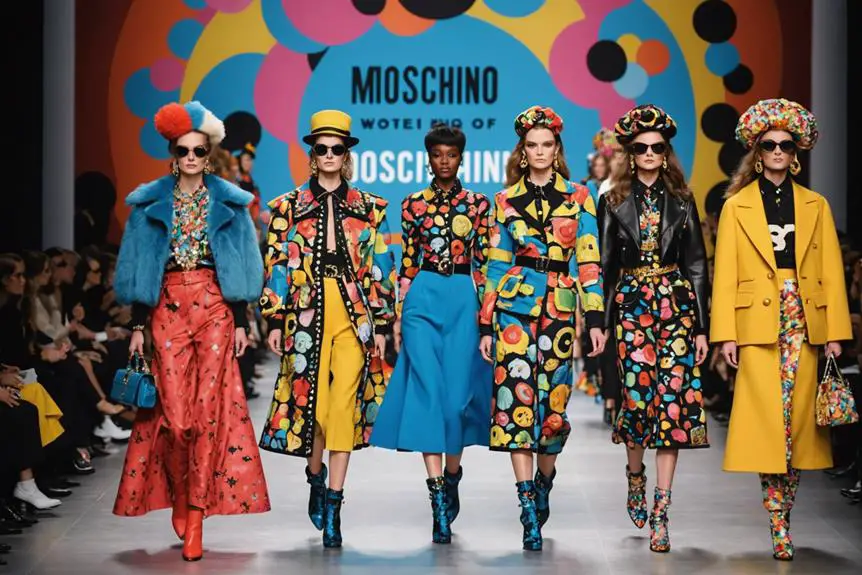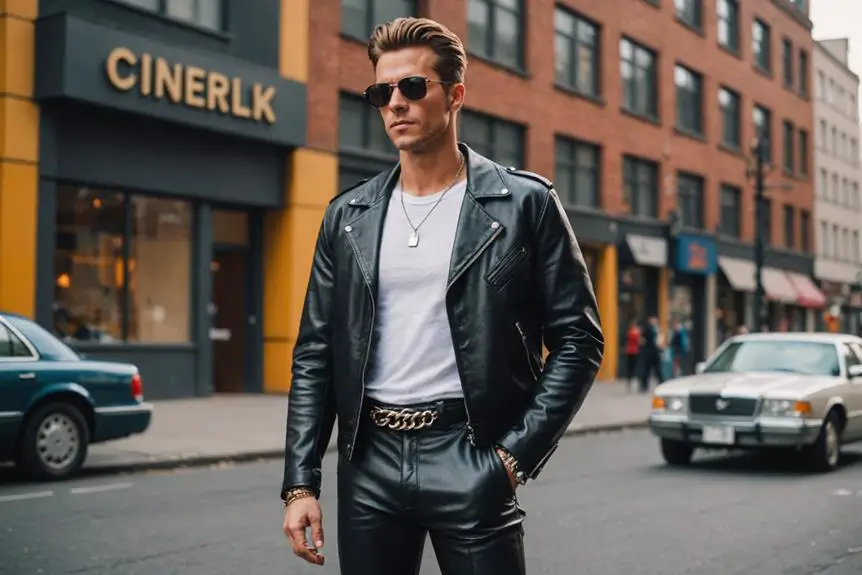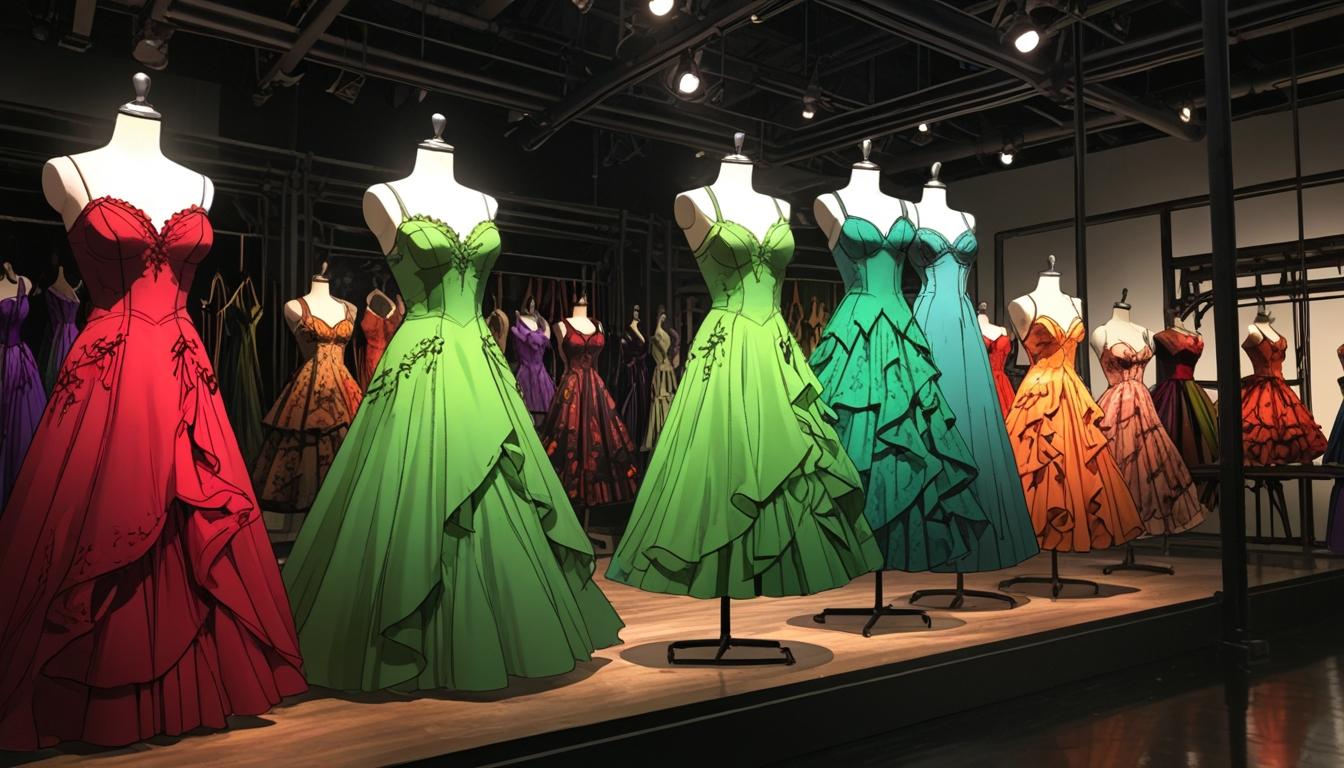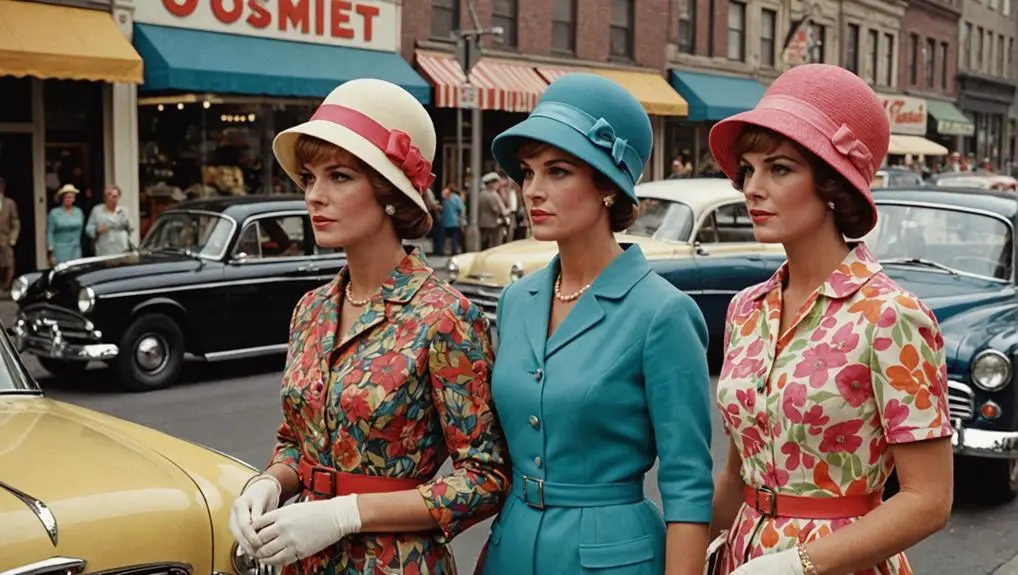The House of Moschino has been shaped by influential designers who've left their mark on fashion. Founded by Franco Moschino in 1983, he introduced a playful and provocative style. After Rossella Jardini took charge, she expanded the brand's reach with Moschino Cheap and Chic. In 2013, Jeremy Scott revitalized Moschino, bringing humor and celebrity collaborations that appealed to younger fans. Recently, Adrian Appiolaza was appointed to blend Moschino's theatrical legacy with sustainability. Each designer has contributed unique perspectives, ensuring Moschino remains a vibrant player in the fashion world. There's so much more to uncover about this dynamic brand!
History of Moschino
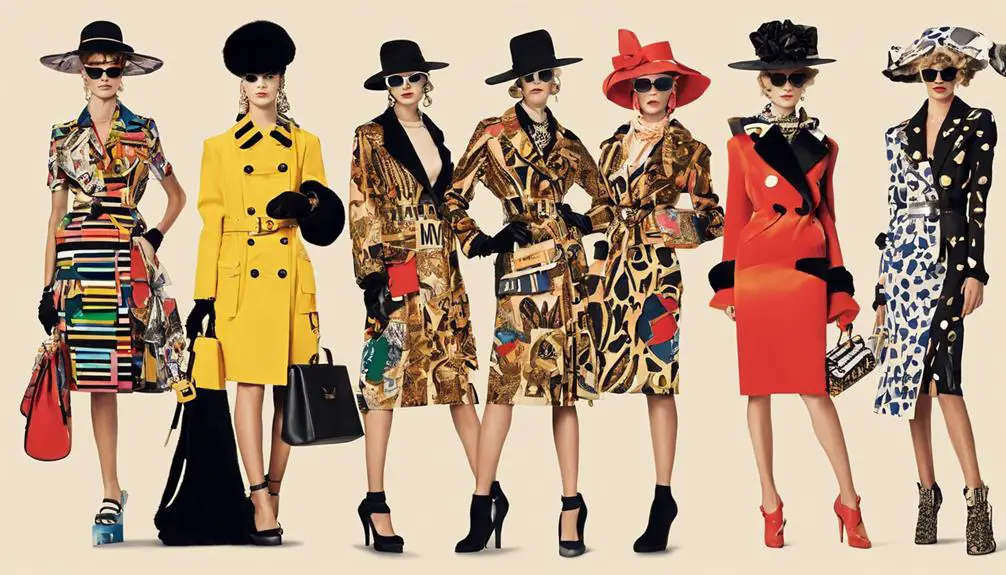
The story of the House of Moschino begins in 1983, when Franco Moschino founded the brand, quickly making a name for himself with his innovative and colorful designs.
Moschino wasn't just about clothing; he infused his work with theatrical designs and social commentary, creating pieces that made people think while they admired the art of fashion.
Over the years, Moschino has become known for its campy designs and bold graphics, making vintage pieces highly sought after identifying vintage Moschino.
After Franco's untimely death in 1994, Rossella Jardini stepped in as creative director. For nearly two decades, she kept the brand's playful spirit alive, ensuring that Moschino's legacy continued to flourish through unique and thought-provoking creations.
In 2013, Jeremy Scott took the helm, bringing a fresh perspective that revitalized the brand. His playful approach and high-profile celebrity collaborations captured the attention of a new generation of fashion lovers.
Under his direction, Moschino became synonymous with bold statements and a sense of humor, further pushing the boundaries of fashion history.
After Scott, Davide Renne briefly led the brand before his tragic passing just nine days into his role.
In January 2024, Adrian Appiolaza was appointed as the new creative director, stepping into a legacy rich with innovative designs and a commitment to theatricality.
Throughout its history, Moschino has remained a beacon of creativity, blending fashion with art and commentary in a way that continues to inspire and provoke thought.
This unique blend of humor and irony is what sets Moschino apart in the ever-evolving world of fashion.
Key Designers and Their Impact
Throughout its history, key designers have played a pivotal role in shaping the identity of the House of Moschino. Founded by Franco Moschino in 1983, the brand quickly established a playful design philosophy that challenged fashion norms, creating impactful designs that captured attention.
After Franco's passing, Rossella Jardini took over as creative director in 1994. She maintained the brand's whimsical spirit and introduced the Moschino Cheap and Chic line in 1988, expanding its reach while honoring its heritage.
In 2013, Jeremy Scott became the creative director, bringing a fresh perspective that revitalized the House of Moschino. His tenure is marked by celebrity collaborations and humorous designs, including the now-iconic mini-Moschino jacket bags.
Jeremy's work resonates with a younger audience, successfully blending fun and fashion in a way that feels both contemporary and timeless.
Following a brief shift period with Davide Renne in 2023, who tragically passed away just nine days into his role, Adrian Appiolaza was appointed in January 2024.
With extensive experience from luxury houses like Loewe, Adrian aims to infuse the brand with a theatrical touch while respecting its rich heritage.
Each designer has left a unique mark on the House of Moschino, ensuring that its playful essence continues to thrive. As you explore the brand's evolution, you'll see how these creative directors have greatly influenced its identity and future direction.
Notable Collaborations and Partnerships
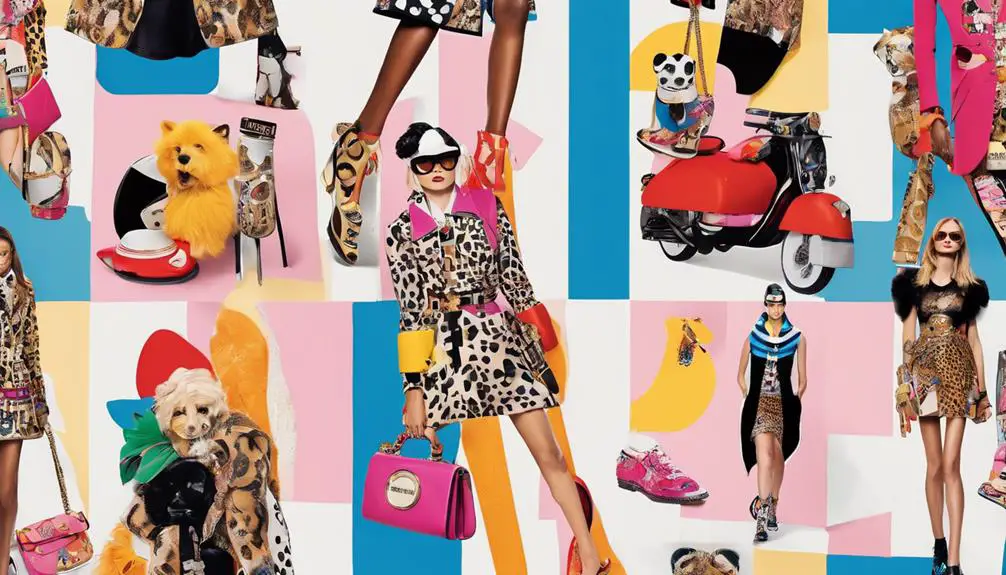
Highlighting its innovative spirit, Moschino has forged notable collaborations and partnerships that resonate with diverse audiences. One of the most significant was the 2018 collaboration with H&M, which generated massive media buzz and consumer interest. This partnership made high-fashion more accessible, drawing in a younger demographic enthusiastic to wear designer pieces without breaking the bank.
Pop culture icons like Katy Perry have also showcased Moschino designs, particularly during her Prismatic World Tour in 2014. When you see these celebrities in Moschino, it emphasizes the brand's influence and appeal in the world of entertainment.
Additionally, Moschino's partnership with The Sims in 2019 highlighted its presence at Coachella, connecting the fashion house with contemporary digital culture and further enhancing its market visibility.
Moreover, Moschino's designs have graced the Met Gala, solidifying its status in high-profile fashion events. These appearances reflect not only the brand's creativity but also its commitment to pushing boundaries in fashion.
Collaborating with artists and influencers has allowed Moschino to tap into current trends and cultural movements, making it relevant in today's fast-paced environment.
Through these collaborations, Moschino continues to attract a diverse audience, blending fashion with elements of pop culture. As you explore the brand's journey, you'll see how its partnerships haven't only expanded its reach but also enriched the fashion landscape, proving that creativity knows no bounds.
Legal Challenges and Controversies
While Moschino's bold designs often capture attention, they've also drawn legal scrutiny that underscores the tension between creativity and copyright laws. Over the years, Moschino has faced several legal challenges, particularly regarding originality in fashion design.
In 2015, accusations surfaced that the brand copied graffiti artists' work, igniting discussions about intellectual property rights and the fine line between inspiration and imitation. A lawsuit between street artist Rime and Jeremy Scott was settled, but Moschino itself didn't partake in this agreement, leaving the brand potentially exposed to further legal issues.
In 2016, the controversy continued when Nordstrom pulled a drug-themed clothing line by Moschino after public protests. This incident highlights how the brand's provocative approach can backfire, leading to significant public backlash.
Such controversies not only stir up discussions in the fashion world but can also adversely affect consumer perception of the brand. Navigating these legal challenges emphasizes the ongoing struggle within the fashion industry to balance creative expression with respect for others' intellectual property.
While Moschino's audacious designs aim to push boundaries, they often encounter resistance that raises important questions about originality and artistic integrity. In this complex landscape, understanding the implications of these legal issues becomes vital for both designers and consumers who appreciate the art of fashion.
Future Outlook and Vision
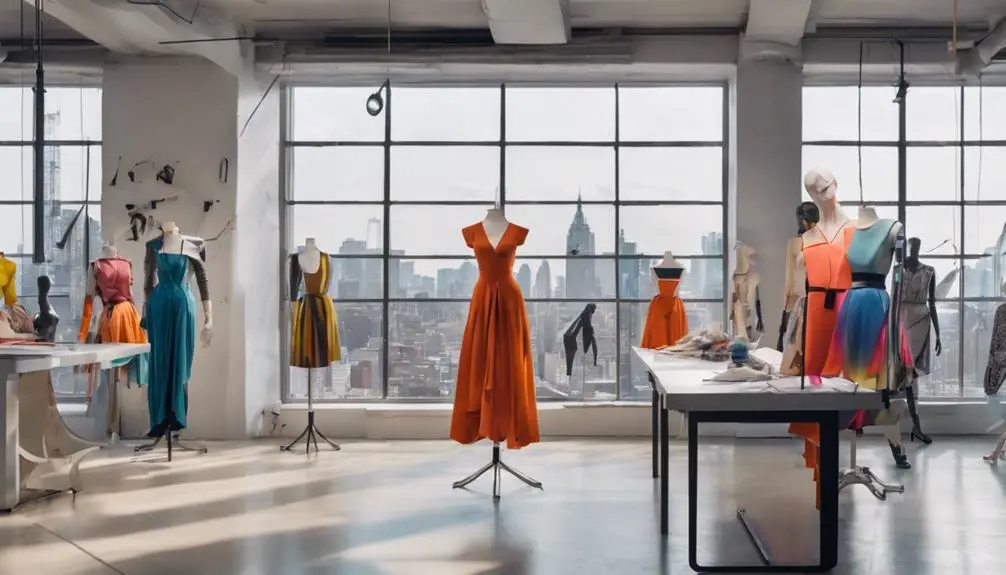
The future of Moschino is poised for an exciting transformation under the leadership of Adrian Appiolaza, who steps in as the new creative director in January 2024. With a debut collection set to launch on February 22, 2024, you can expect a fresh perspective that blends Moschino's rich history with a theatrical touch.
Appiolaza's vision is clear: he wants to bring innovative strategies to the brand while maintaining sustainability as a core principle. Much like the evolution of L.L. Bean, which has adapted to changing consumer needs while staying true to its roots, Moschino is looking to rejuvenate its brand identity. This will involve embracing both legacy and modernity in its design approach, reflecting a commitment to quality and customer engagement, which are central to enduring brands' success, such as L.L. Bean's emphasis on outdoor culture.
As you look ahead, it's important to reflect on the challenges Moschino has faced, including a 9.5% revenue decline in 2022. This highlights the need for a strong, creative direction.
Appiolaza plans to address these issues by leveraging the brand's archival pieces and introducing fresh designs that resonate with today's consumers. His approach won't only revitalize Moschino's market presence but also enhance its visibility through collaborations with artists and influencers.
In this exciting new chapter, sustainability will be a guiding force. Appiolaza aims to integrate environmentally friendly practices in every collection, ensuring that Moschino remains relevant in a rapidly changing fashion landscape.
His leadership promises to balance innovative design with the operational realities of the Aeffe Group, paving the way for a brighter, more sustainable future.
